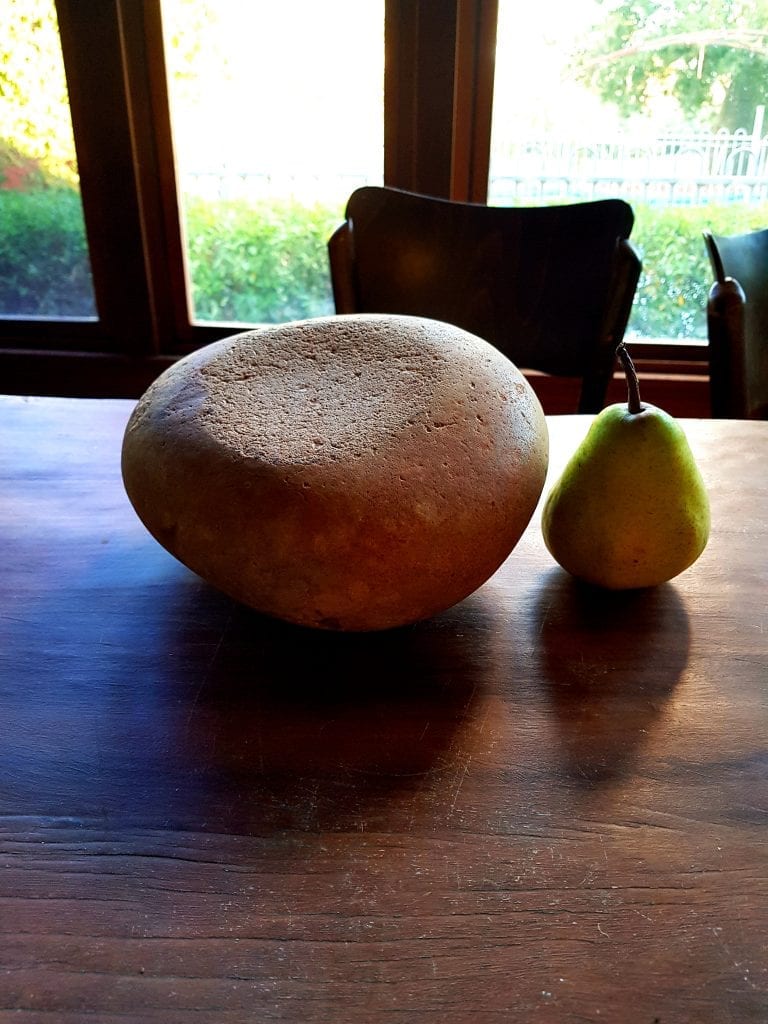I have been spraying cactus & mimosa this week and have been rewarded with finding the loveliest grinding stone I’ve ever seen. It is an oval triangular(ish) prism 53 cm in circumference and 10cm deep so I have photographed it with a pear to give perspective. This beautifully pink mottled river stone was sitting up fully exposed about 6 metres from the main road beside our paddock access track and entrance gate. The location itself is unremarkable as like many roads built by surveyors in the late 1800s, it simply followed the existing Aboriginal path. How we have never noticed it before however is inexplicable, as it resembles a slightly flattened stone emu egg X 2 and is as rare as hen’s teeth X 4. I’ve always dreamt of finding an intact artefact but as my eyes are on the trees I rarely see these exceptional objects. My Karma stone – what comes around goes around ….. I have been wondering how far the Karma stone must have travelled as we have neither local rock nor enough sloping stony river bed capable of making it so smooth. Heavy objects like these (about 4-5 kilos) were often left at convenient camps on high ground so they didn’t have to be lugged around. Was it a prized possession, fondled and marvelled over or does it just have that effect on me? The concave rubbing indent seems barely used compared to the broken pieces and fragments I usually see. One of the neighbours’ paddocks has a 1 km stretch of raised red scalded flat that is so littered with flakes, microliths, grinding stone shards and the general flotsam & jetsam of indigenous camp life that it looks like a shopping mall for archaeologists. The hearths and ovens are blended in with chips of imported stone extending out and upwards like ant beds and draining into deep billabongs – the deepest of which is indicated by a coolabah Ring tree. I also stumbled upon an isolated oasis of sand hills and riverless redgums on another neighbour’s property this week. This remote Garden of Eden has its own well and plantings of Darling lily that must be deliberate as they are never found naturally in the sand. Only an acre or two, this sanctuary has a large sheltered camp in the centre and pines that are burnt to the base and seemingly scooped out like charcoal bowls. The European style well with its large galvanised iron & timber backed cover must have been the early water source for the first settlers there. A place to die for… or in perhaps?

